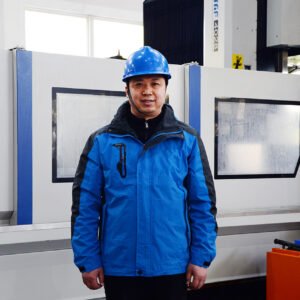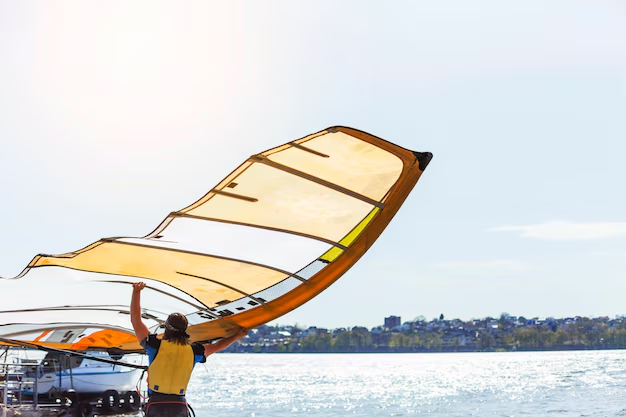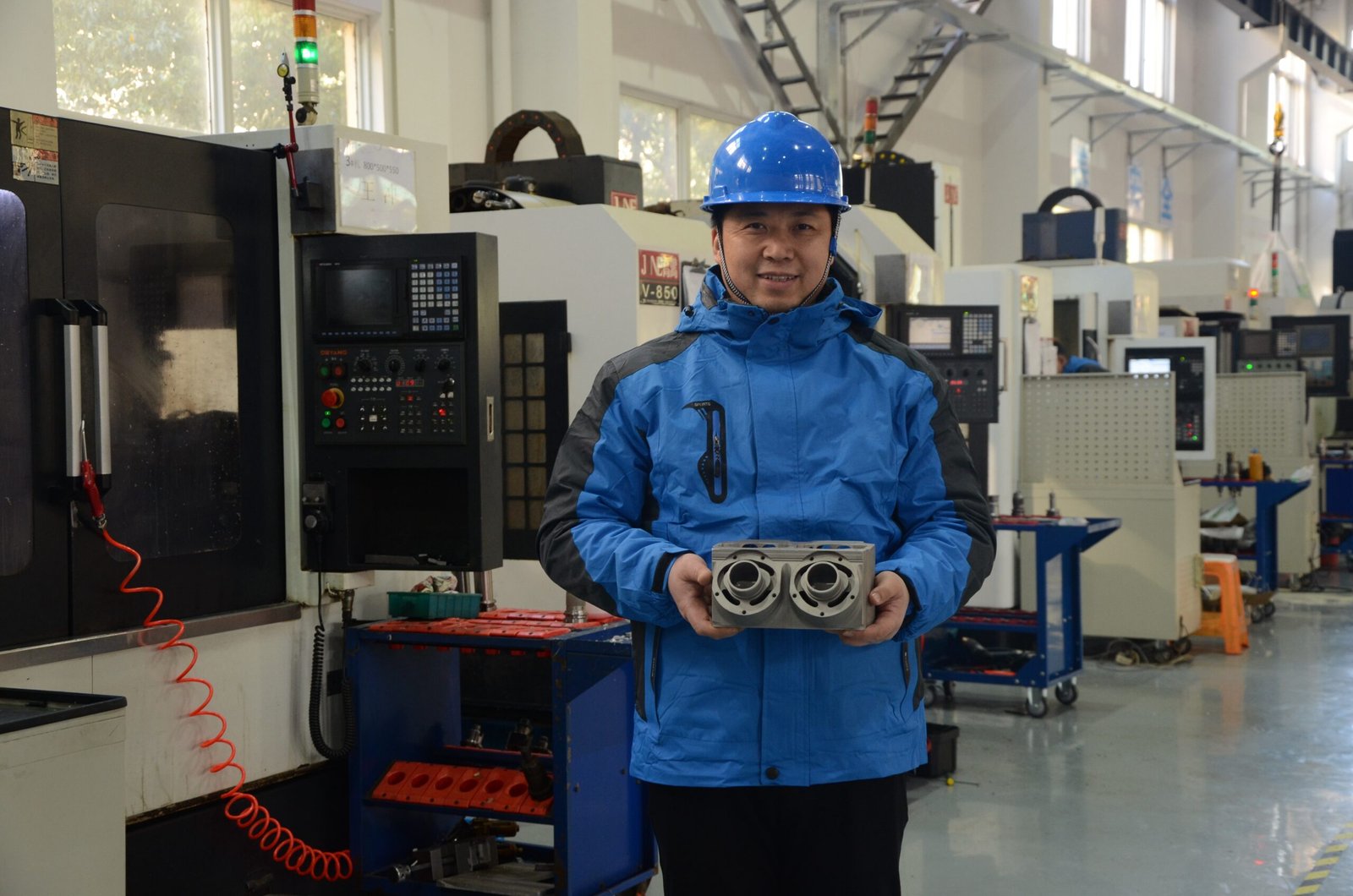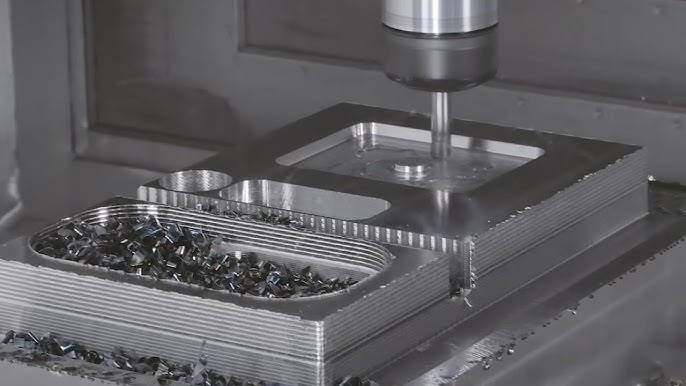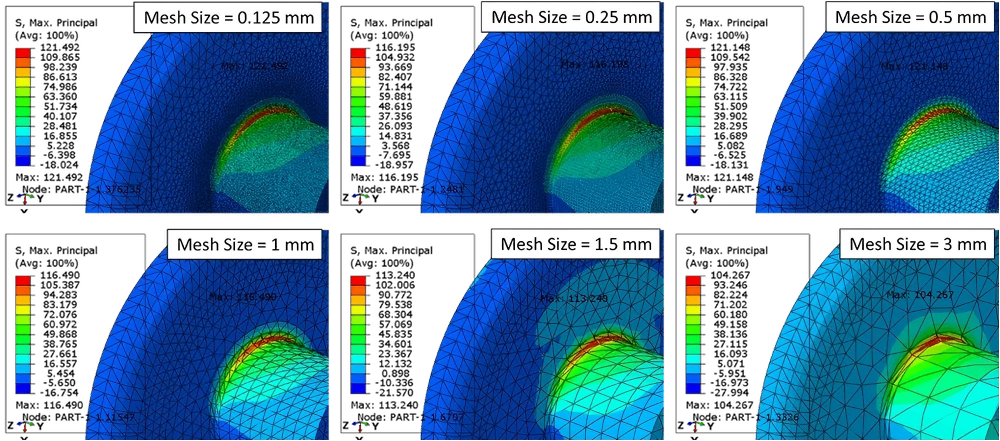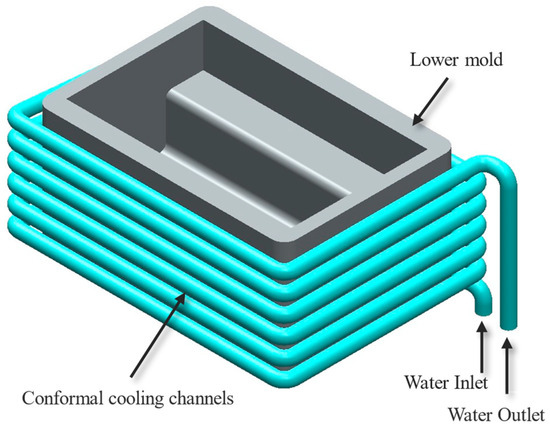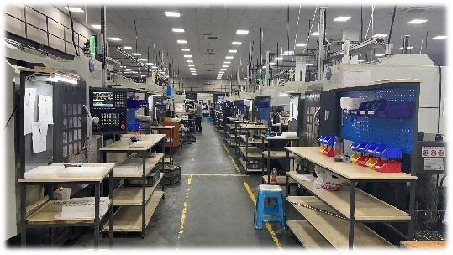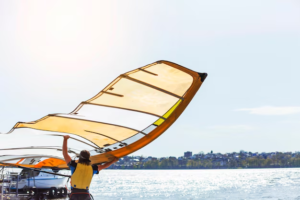
What if it were possible to design sailboat parts that are particularly suited to your vessel's particular requirements with unparalleled accuracy and durability? In what ways can advanced technology provide exceptional performance on the water while helping you realize your creative visions? These imaginary questions are becoming realities in the sailboat manufacturing industry due to Computer Numerical Control (CNC) machining.
Custom sailboat parts are now created with a level of accuracy, flexibility, and efficiency that is just unmatched by traditional manufacturing procedures due to CNC techniques. The ability of Computer Numerical Control (CNC) machining in the sailboat manufacturing industry has made this a reality rather than a pipe dream.
CNC machining has completely changed the process of creating custom sailboat parts by fusing precision, speed, and adaptability to each vessel's particular requirements. Whether you want to improve the aerodynamics of your boat, reinforce its structural integrity, or add elaborate details, CNC technology allows you to realize your ideas with remarkable accuracy.
But what exactly is CNC machining, and why has it become so important to builders of custom sailboats? In what ways has it surpassed conventional techniques, allowing for limitless customization and unprecedented production efficiency?
This article will examine how CNC machining has revolutionized the sailing sector. Learn how CNC techniques are expanding the possibilities for custom sailboat design, enabling both manufacturers and sailors to improve both performance and aesthetic appeal. These techniques range from intricate hull fittings to lightweight, high-strength rigging components.
Explore the ways that CNC technology is redefining sailboat innovation.
II. Evolution of Manufacturing Techniques in the Marine Industry
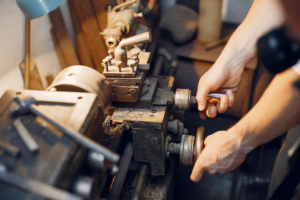
The majority of sailboat parts were made by hand in the early days of production, with each component being shaped and fitted by trained artisans. Conventional fabrication techniques, such as casting, hand milling, and welding, involved a lot of work and frequently allowed for small variations that could affect the accuracy and fit of a product. Although these techniques permitted a certain amount of personalization, they were constrained by the intrinsic errors of manual procedures.
When CNC (Computer Numerical Control) machining became available, the maritime sector began to move toward automated, extremely accurate manufacture. Computer-controlled instructions drive CNC machines, which cut and shape components down to the micron. For the precise geometry needed in custom sailboat components, this degree of accuracy is crucial. It would be labor-intensive and error-prone for manufacturers to produce identical parts with precise specifications across several units using manual methods; in comparison, CNC machining gives significantly greater consistency.
Problems with Manual Customization: Scalability and Precision Limitations
There were numerous significant obstacles to manual customization in sailboat manufacture. First, it was challenging to achieve high precision; even the most skilled craftspeople could only partially match requirements, which could affect how well a component fits or works. Furthermore, manual customization was time-consuming and labor-intensive, frequently requiring trained labor that was hard to scale for tight deadlines or bigger manufacturing runs. It was difficult to create complex shapes, such as lightweight rigging components or aerodynamic hull fittings, because standard tools could not consistently recreate sophisticated designs required for high-performance sailboats.
Additionally, manual methods were unable to meet the demands of the expanding sailboat market due to their lack of scalability. Traditional production was unable to meet the diversity and accuracy that contemporary sailors demanded as more boatbuilders and fans sought customized, premium sailboats. As a result, a more effective method for mass-producing customized parts without compromising quality was required.
III. The Role of CAD Software in Custom CNC Projects
Custom CNC projects, especially those involving the construction of specialty sailboat components, depend heavily on Computer-Aided Design (CAD) software. Designers and engineers may precisely model parts with CAD, precisely describing each dimension, curve, and feature. Before any actual material is produced, engineers can see intricate geometries thanks to this digital design process, which also lowers the possibility of mistakes. Manufacturers can guarantee that every part, from mast connectors to hull fittings, satisfies precise specifications by employing CAD, which improves the sailboat's lifetime and performance.
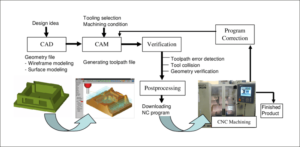
The ability of CAD to seamlessly integrate with Computer-Aided Manufacturing (CAM) software, which converts CAD designs into machine instructions for CNC equipment, is one of its biggest benefits. Lead times are decreased and total production efficiency is raised by this CAD-to-CAM integration, which optimizes the entire design-to-production cycle. Engineers can make real-time tweaks and swift design modifications, guaranteeing that every custom component is optimized before it is sent to the CNC machine. In the production of custom sailboats, where specialized requirements frequently call for quick prototyping and iterative testing, this method is quite beneficial.
Manufacturers can develop and test intricate shapes that would be challenging or impossible to accomplish by hand with CAD software. For sailboats, this entails designing complex components that improve the vessel's functionality and visual attractiveness, such as hydrodynamic hull fittings or ergonomically curved deck elements. Additionally, CAD supports the growing trend of customized, one-of-a-kind sailboats by enabling the exploration of multiple design choices and the customization of parts to precise customer specifications. Without CAD, it would be difficult to accomplish this degree of personalization since it makes it easier to create intricate 3D models and test them in simulated environments.
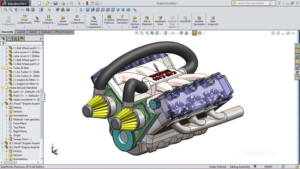
Additionally, CAD software is useful for structural analysis and material selection, two important aspects of marine manufacturing. To help designers select materials that are most appropriate for the maritime environment, many CAD systems come with built-in features for evaluating the strength, weight, and durability of various materials. For instance, CAD can model how a part will resist different forces like wind, waves, and corrosion, guaranteeing that the material and design selected will endure in actual use. By using this technique, engineers can choose materials that are both lightweight and robust, maximizing the performance and resilience of sailboat components.
IV. Benefits of Custom CNC Parts for Sailboats
Sailboat custom CNC parts provide increased performance, durability, and fit, guaranteeing dependable, premium parts made to satisfy particular sailing requirements and endure challenging marine conditions. Here are some benefits of custom CNC parts.
1. Accuracy and Perfect Fit
CNC machining ensures that every component is produced with the utmost accuracy, offering a perfect fit that improves functionality and reduces wear. For components like mast fittings and rudder brackets, where alignment has a direct effect on functionality, this accuracy is essential.
2. Improved Sturdiness
Custom CNC parts can be made from strong, marine-grade materials that are highly resistant to wear and corrosion in seawater. As a result, parts last longer and require less maintenance, increasing total dependability.
3. Reduced Weight for Improved Performance
Lightweight materials can be used using CNC machining without compromising strength, and parts can be optimized for increased speed, maneuverability, and fuel efficiency.
4. Personalization and Customization
High degrees of customization are possible using CNC technology, enabling producers to produce one-of-a-kind components that satisfy certain performance and design requirements.
5. Increased Production Speed and Reliability
By automating production, CNC machining ensures consistent quality while cutting lead times for unique items. Both small and large orders can be manufactured effectively thanks to scalable production.
6. Cost-effective
Despite somewhat higher initial costs, CNC machining offers long-term cost reductions with durable, low-maintenance parts and less waste, making it cost-effective over time.
7. Environmentally Friendly Method
In the sailboat industry, CNC promotes environmentally friendly production methods by lowering energy and material waste.
8. Performance Enhancement
A key advantage for racing and high-performance sailboats is the ability to build aerodynamic and hydrodynamic components with CNC, which lowers drag and improves speed and handling.
V. CNC Procedure for Creating Custom Sailboat Parts
To create custom sailboat parts, CNC machines must be programmed to accurately cut, shape, and finish materials following specified design parameters. This procedure involves a multi-step process for sailboat production. These methods allow for the creation of incredibly intricate and robust parts that are precisely suited to each sailboat's requirements.
Choosing Materials That Are Appropriate for Marine Applications
For custom sailboat parts to be strong, resilient to the harsh sea climate, and long-lasting, the proper materials must be chosen. Materials like these can be precisely shaped thanks to CNC machining:
- Stainless steel is utilized in structural elements such as fittings, fasteners, and rigging hardware because of its strength and resistance to corrosion.
- Aluminum: Frequently used for hull fittings, deck hardware, and mast components, aluminum is lightweight and corrosion-resistant.
- Titanium: Perfect for high-performance parts that need to be both lightweight and durable, titanium offers an outstanding strength-to-weight ratio and corrosion resistance.
- Maritime-Grade Plastics: These materials, which are resistant to maritime conditions and offer durability and decreased weight, are frequently used for bearings, bushings, and non-structural components. Examples of these materials are nylon and Delrin.
To guarantee that each component can tolerate exposure to seawater, UV radiation, and high mechanical stresses without sacrificing performance, the proper material selection is crucial.
1. Two- and Three-axis Machining
When making flat or moderately complex items, 3-axis machining is the most used CNC technique. The tool cuts and shapes materials by moving along the X, Y, and Z axes. For sailboat components, this method is frequently employed to produce parts that don't require intricate geometry, such as plates, fittings, or flat brackets.
2. 5-Axis Cutting:
This sophisticated technique makes use of five axes of motion, enabling the cutting of objects with intricate geometries in greater depth and complexity. For things like mast fittings, special hull pieces, and other intricate elements, it's perfect. It improves the precision of complex designs and makes it possible to make precise cuts from a variety of angles, which lessens the need to move pieces during manufacturing.
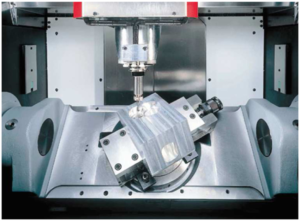
CNC machine with five axes and two rotating tables
3. Milling:
CNC milling removes material from a workpiece by using rotating cutting tools. Custom sailboat parts that need intricate forms, such as deck hardware or structural elements, are made using this method. For the part to fit perfectly and function at its best in maritime circumstances, milling enables accurate cuts and clean finishing.
4. Turning:
A workpiece is rotated during CNC turning while being shaped by a stationary cutting tool. This method is utilized to make cylindrical components like rudder assemblies, shafts, and pulleys. Perfect symmetry, balance, and smooth surfaces are guaranteed by CNC turning, which is essential for parts that must properly fit into other sailboat components or are subjected to rotational forces.
5. Engraving and Laser Cutting
While laser engraving affixes drawings, logos, or serial numbers to components, laser cutting slices materials accurately using concentrated laser beams. Custom markings on hardware or fittings are examples of elaborate patterns and fine details that are best suited for this method. For parts that need precise edges or decorative elements for branding or personalization, laser cutting is perfect.
6. Final Methods
Many items need finishing procedures once CNC machining is finished to improve their look, robustness, and usability. Common methods for finishing include:
- Polishing: It is the process of giving components a glossy, smooth surface to improve appearance and lessen friction.
- Anodizing: This procedure, which is mostly applied to aluminum, improves corrosion resistance and can be colored to improve aesthetics.
- Coating: Putting on protective coatings, including galvanization or powder coating, to help shield components from wear and corrosion.
These finishing methods guarantee that parts for custom sailboats are not only highly functional but also resilient to the challenging sea environment.
7. 3D CNC Prototyping
3D CNC Prototyping creates accurate and useful prototypes by combining computer numerical control (CNC) machining with 3D modeling. Its accuracy and effectiveness make it popular in sectors like consumer electronics, automotive, and aerospace. Manufacturers can use 3D CNC prototyping to turn a CAD design into a physical model of a custom part before moving forward with full-scale production. Before parts are mass-produced, this procedure assists designers in confirming that they fit and work as intended. When testing intricate elements like mast fittings, hull components, and deck hardware, 3D prototypes are particularly helpful since they enable any necessary alterations to be made before the final CNC milling process.
Important characteristics:
- High Precision: 3D CAD models are converted into intricate prototypes with precise tolerances by CNC machines.
- Variety of Materials: Suitable for composites, polymers, and metals (steel, aluminum).
- Fast Turnaround: Development time is shortened by producing prototypes quickly.
- Repeatability: For iterative designs, repeatability guarantees consistent outcomes.
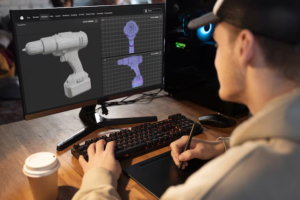
VI. Popular Custom CNC Components for Sailboats
There are numerous sailboat parts, but some main sailboat parts are described in detail here
1. Hardware for Decks
Winches, cleats, blocks, and fairleads are just a few of the various components that make up deck hardware and are necessary for sailboat operation. Deck hardware made using CNC machining is incredibly lightweight, sturdy, and precisely fitted. Personalization guarantees that every component fits precisely on the boat's deck, enhancing both practicality and visual appeal. CNC machining offers the versatility to produce parts that are suited to the needs of the sailor, whether it's a specially made winch for more seamless sail adjustments or a cleat for particular rope handling.
2. Assemblies of Rudders
Rudders are essential for steering, and precision-engineered rudder parts that satisfy certain design specifications, including shafts, blades, and gudgeons, can be produced by custom CNC machining. Rudder blades with flat surfaces that are hydrodynamically tuned can be produced using CNC processes, which lowers drag and improves performance. CNC also makes it possible to create specialized rudder components that fit a variety of sailboat shapes and sizes, including cruisers and racing boats.
3. Fittings for masts and rigging elements
The rigging must be secured and supported by mast fittings including turnbuckles, tangs, and spreaders. Manufacturers can produce strong, lightweight parts that can tolerate high tensile stresses through CNC machining. Options for customization enable the development of unique fittings for various rig types, whether for conventional or contemporary masts. These parts fit precisely thanks to CNC manufacturing, which maximizes the sailboat's overall functionality and structural soundness.
4. The Hull Fittings
Deck plates, keel attachments, and through-hull valves are examples of hull fittings that need to be constructed to endure the pressures of weather conditions and water pressure. These parts are made to precise specifications due to CNC machining, guaranteeing a tight fit and no leaks. For improved durability and corrosion resistance—both essential for the sailboat's longevity and safety—custom hull fittings can be made to fit particular kinds of materials.
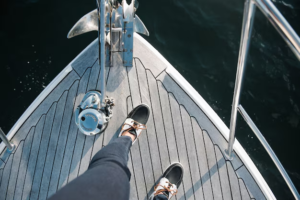
5. Pulleys and Propeller Shafts
The sailboat's propulsion system depends heavily on specially made CNC-machined propeller shafts and pulleys. These parts need to be designed to be precisely aligned while withstanding severe rotational forces. By ensuring that the parts are balanced and flawless, CNC machining increases productivity and lowers wear. Whether the yacht is being used for cruising or racing, custom pulleys and shafts can be made to meet its unique requirements.
6. Personalized Supports and Brackets
Custom brackets and supports that are essential for a variety of sailboat systems, including rigging, electronics, and navigational equipment, can be made using CNC machining. These sections may be made to firmly support solar panels, antennas, or winch systems, among other items. These components fit precisely thanks to custom brackets created using CNC technology, which maximizes the boat's use and space.
7. Anchoring systems and bollards
For docking and securing the boat, custom bollards and anchoring devices such as cleats and windlasses are essential. These parts are lightweight, corrosion-resistant, and produced with great strength and durability thanks to CNC machining. These components can be precisely adjusted with CNC to satisfy particular docking requirements, offering dependable and safe solutions for both amateur and professional sailors.
8. Carriages and Sail Tracks
Smooth sail handling is made possible by sail tracks and carriages, which can be precisely crafted by CNC machining to guarantee maximum performance and low friction. While carriages can be manufactured to easily adjust sails, custom sail tracks can be made to precise lengths and designs. These parts are guaranteed to function flawlessly together thanks to CNC technology, resulting in efficient and seamless sail operation.
9. Navigational aids and compasses
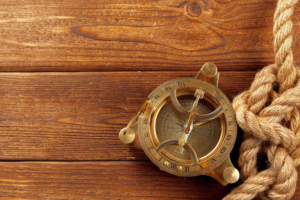
Compasses and electronic displays are two examples of the sophisticated navigational equipment that is frequently found in modern sailboats. Precision housings and mounting brackets for various gadgets can be made by CNC machining, guaranteeing their easy access and secure attachment to the boat. To optimize the sailboat's cockpit layout and guarantee that the equipment stays safe and operational in maritime situations, custom parts can be produced to fit particular instrument designs.
10. Interior Materials
Custom interior components like cabinetry, seats, and storage systems can be made using CNC machining, so it's not just for outside pieces. These elements need to be both aesthetically beautiful and useful, and CNC makes it possible to create parts that precisely suit the sailboat's constrained area. It is possible to precisely shape and fit materials like marine plywood, laminates, and composites to create an interior that is both fashionable and long-lasting.
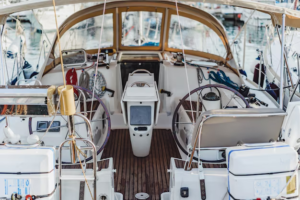
VII.Case Studies and Real-World Examples
- Organization: Southern Spars, New Zealand
- Problem: Southern Spars's challenge was to create carbon fiber parts that were lightweight and remarkably sturdy for a line of high-end boats. Among the parts were rigging hardware, booms, and specially-made masts.
- Solution: To cut and shape the carbon fiber composites into the necessary geometries for the masts and booms, CNC machining was utilized. CNC machines' fine control made it possible to create complex shapes with little waste, which decreased overall costs.
- Result: The customized components were lighter and stronger than conventional materials. This increased client happiness by enhancing the yacht's overall aesthetic appeal, performance, and fuel efficiency.
- Company: USA-based South Coast Yachts
- Problem: South Coast Yachts' challenge was to manufacture specialized rudders for racing sailboats with exceptional performance. For the rudders to provide the best handling and longevity in racing circumstances, they had to be sturdy, lightweight, and precisely built.
- Solution: To produce intricate and accurate rudder profiles, CNC machining was utilized. To ensure smooth water flow, the design needed several procedures, including accurate surface finishing after the aluminum alloy was machined into a streamlined shape.
- Results: By producing custom rudders with precise tolerances using CNC technology, improved control and decreased drag were made possible. As a result, the sailboats performed better throughout the competition.
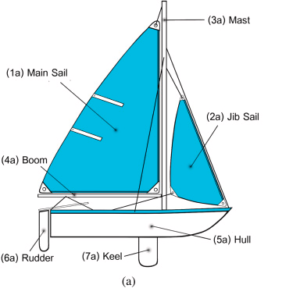
VIII. How to Choose a CNC Machining Service for Sailboat Parts
Selecting the best CNC machining service for your sailboat's components is an important choice that may have an impact on your boat's functionality, longevity, and safety. The following elements should be taken into account to make sure you choose the best service provider:
- Industry Experience: Verify if the service has worked with maritime components before and is aware of particular difficulties, such as strength and corrosion resistance.
- Material Expertise: Pick a supplier who has worked with marine-grade materials such as composites, stainless steel, and aluminum.
- Precision & Tolerance: Seek out a service that can adhere to the strict tolerances needed for components such as rigging, hull fittings, and rudders.
- Equipment and Capabilities: Verify that they have the appropriate CNC equipment for the complexity and material requirements of your product.
- Quality Control: To guarantee parts free of flaws, inquire about their quality assurance procedures, which include testing and inspections.
- Customization and prototype: Verify that they provide a prototype so that designs can be tested before final production.
- Lead Time: Talk about turnaround times to guarantee on-time delivery, particularly for projects with deadlines or maintenance.
- Cost: Obtain thorough bids, bearing in mind that precision work and high-quality materials may be more expensive.
- Customer service: Pick a provider that offers excellent customer service and prompt communication.
IX. Challenges and Considerations in CNC for Sailboats
A common option for producing sailboat parts is CNC (Computer Numerical Control) machining, which provides accuracy and efficiency. However, there are several issues and factors to take into account while utilizing CNC to produce sailboats:
1. Selection and Compatibility of Materials
A variety of materials, such as metals, composites, and polymers, are needed for sailboats. Because every material has different qualities, choosing the best one for a given part is essential for both performance and longevity.
2. Intricate Geometries
Intricate and complicated geometries, like curved surfaces, contoured edges, and minute details, are frequently seen in sailboat parts. These intricate forms must be meticulously programmed into CNC machines, which may necessitate several tool changes and tweaks to attain the required precision.
3. Accuracy and Tolerance
Components for sailboats need to be built with incredibly fine tolerances, especially those that are load-bearing or intended for high-stress applications. It can be challenging to meet these tolerances, particularly when working with larger components or materials that are more likely to expand or contract as a result of variations in humidity and temperature.
4. Wear and Maintenance of Tools
CNC tools used for sailboat parts may wear down faster than those used for other industries because of the hardness of the materials and the level of precision needed. Maintaining high-quality output and minimizing production downtime requires routine tool wear monitoring and repair.
6. Price Factors
The complexity of custom sailboat parts combined with the high cost of CNC equipment and tooling can make CNC machining costly. Particularly for custom boat builders or smaller manufacturers, it's critical to strike a balance between cost-effectiveness and the requirement for extreme precision.
7. Constraints on Size
Depending on the machine's work envelope, the size of items that can be manufactured is limited, even if CNC machines can handle huge pieces. Certain sailboat components, like as big deck elements or hull sections, could call for specialized tools or several machining processes.
8. Environmental Factors
To prevent problems like temperature swings, humidity, and dust that could compromise the accuracy and caliber of the finished product, CNC machining environments should be carefully managed. Because sailboat components are frequently subjected to severe maritime conditions, they need to be strong and resistant to UV rays and corrosive saltwater.
X. Future of CNC Customization in Sailboats
Sailboat CNC (Computer Numerical Control) customization has a bright future due to technological developments that open the door to more accurate, individualized, and efficient manufacturing procedures. The significance of CNC in creating custom sailboat parts that satisfy the increasing expectations for performance, durability, and aesthetics is evolving together with the marine industry. The following are some significant developments and trends influencing CNC customization in sailboat manufacturing going forward:
- Advanced Materials: For precise cutting, new high-performance materials like composites and carbon fiber will need specific CNC processes.
- 3D Printing Integration: Complex, lightweight, and customized parts can be produced on demand by combining CNC with 3D printing.
- Automation & AI: AI will improve accuracy, lower mistakes, and allow for real-time modifications. Production will be streamlined by automation and robotics, increasing uniformity and efficiency.
- Increased Customization: CNC will allow sailboat designs to be more precisely crafted, providing distinctive features and shapes to suit personal tastes.
- Sustainability: Waste and environmental effects can be decreased by eco-friendly machining techniques and efficient material utilization.
- IoT & Digital Twin: By integrating digital twin technology, the design process will be optimized, real-time data will be available to improve decision-making, and high-quality production will be guaranteed.
IX. Conclusion
Sailboat CNC customization has a promising future with technology breakthroughs that open the door to more accurate, effective, and environmentally friendly production methods. CNC technology is revolutionizing the design and manufacturing of sailboat components through the use of modern materials, automation, 3D printing, and artificial intelligence. It is also promoting environmentally responsible methods.
More customization and quicker production will be made possible by these advancements, which will also guarantee high-quality, performance-driven parts that satisfy the changing demands of the marine sector. CNC customization will become more and more important in determining the direction of sailboat manufacture as these technologies advance.

